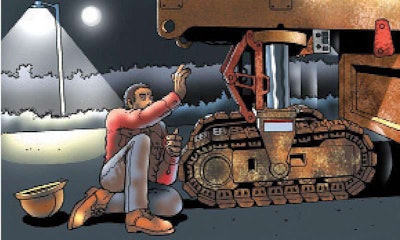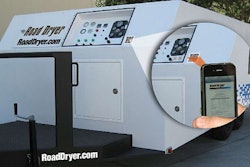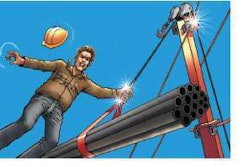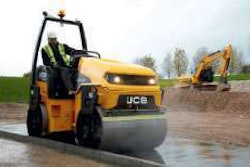
Nighttime paving projects offer unique hazards for workers
By Amy Materson
The accident: A paving crew was milling and repaving a parking lot at night. A laborer was assigned to walk alongside a cold milling machine, acting as a spotter for the operator as well as monitoring the cutting drum area. The operator and the laborer were using head nods as signals to proceed. Following a pass with the machine, a sweeper operator cleaning up milling debris alerted the operator that the milling machine had backed over the laborer during repositioning. He was transported to a local hospital where he was pronounced dead from severe injuries to his lower extremities.
The bottom line: A post-accident investigation determined the system of using nods as an all-clear signal most likely created a miscommunication between the operator and the victim. The investigation further determined that the paving crew had worked a full seven-hour shift prior to starting the night project and named fatigue as a possible related cause.
Proactive prevention
A milling machine has a high gear speed averaging just 3 mph, but it doesn’t matter how slowly the equipment travels if you’re caught under it. In addition to your normal safety routine, keep the following in mind when working nighttime paving jobs.
Boost communication: For some tasks, a nod of the head may suffice as an all clear. When you’re working near a machine, however, take extra steps to prevent miscommunication. A signaling system that includes hand, flag or light wand signaling that is clearly understood by all crew members will eliminate accidental go signals.
Increase visibility: The operator had to rely on the spotter because he couldn’t see the area immediately around the machine, a situation that could be aided if the equipment had a rear camera. In addition, the use of radio frequency identification tags and tag readers can warn the operator if you’re too close to the machine. However the machine is equipped, the operator should be aware of the position of all personnel working around it.
Reduce fatigue: In this accident, the entire crew had worked a full shift and were in the process of working another. Being awake and alert goes a long way toward preventing accidents.
Information for this Safety Watch is from an accident report and the Center for Disease Control’s NIOSH Fatality Assessment and Control Evaluation program. It is for general information only.
Sponsored by














